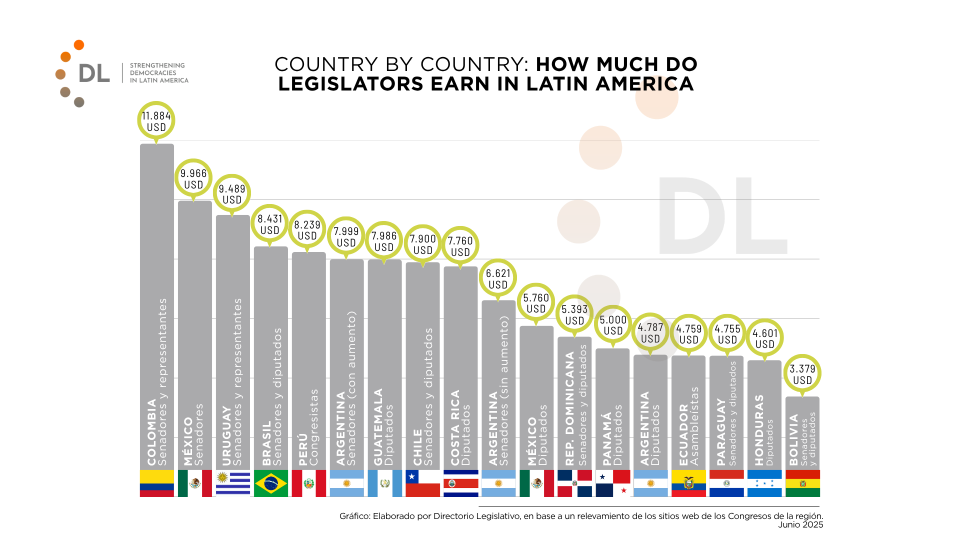X-Ray of Legislative Salaries in Latin America

Colombia tops the ranking with salaries exceeding $11,000 per month, followed by Mexico and Uruguay. At the other end of the scale are Honduras and Bolivia, where incomes are up to three times lower.
In Latin America, legislators’ salaries vary widely, reflecting significant economic and political differences between countries. A survey by Directorio Legislativo reveals a large disparity in monthly earnings—some exceed $11,000, while others fall short of $3,500.
The highest-paid legislators in Latin America are in Colombia, where gross monthly remuneration reaches $11,884. They are followed by Mexico, where senators earn $9,666 (while deputies earn $5,760), and Uruguay, where both representatives and senators earn $9,489 per month.
Next in the ranking are Brazil, with salaries of $8,431; Peru, with incomes of $8,239; and Guatemala, where members of Congress earn $7,986 per month. In the mid-range are Chilean lawmakers, who earn $7,900, and Costa Rican deputies, with earnings of $7,760.
Argentina presents a particular case. There is a marked difference between the salaries of representatives from both chambers of Congress, and even within the Senate, two salary scales coexist. This is due to Decree 344/25, which allows senators to opt out of salary increases granted to other legislative staff. As a result, senators who accepted the raises currently earn $7,999, while those who declined them receive $6,621. Argentine deputies, meanwhile, earn a salary of $4,787.
In the Dominican Republic, legislators earn $5,393, while in Panama, assembly members receive $5,000. They are followed by Ecuador, with a monthly income of $4,759; Paraguay, with salaries of $4,755; and Honduras, with $4,601. At the bottom of the scale is Bolivia, where both deputies and senators earn the lowest salaries in the region, at $3,379.
Methodology
These figures, compiled by Directorio Legislativo, come from official congressional websites, government open data portals, payroll lists, and journalistic sources. The amounts refer to average gross monthly earnings in 2025, including all salary components. For countries with currencies other than the U.S. dollar, conversions were made using the official exchange rate as of June 26, 2025, as published by Google Finance.
In many cases, access to this information was difficult, or the available data lacked clarity. That’s why greater transparency and clearer publication of lawmakers’ salaries and income are essential, along with proactive transparency practices that encourage citizen engagement.
